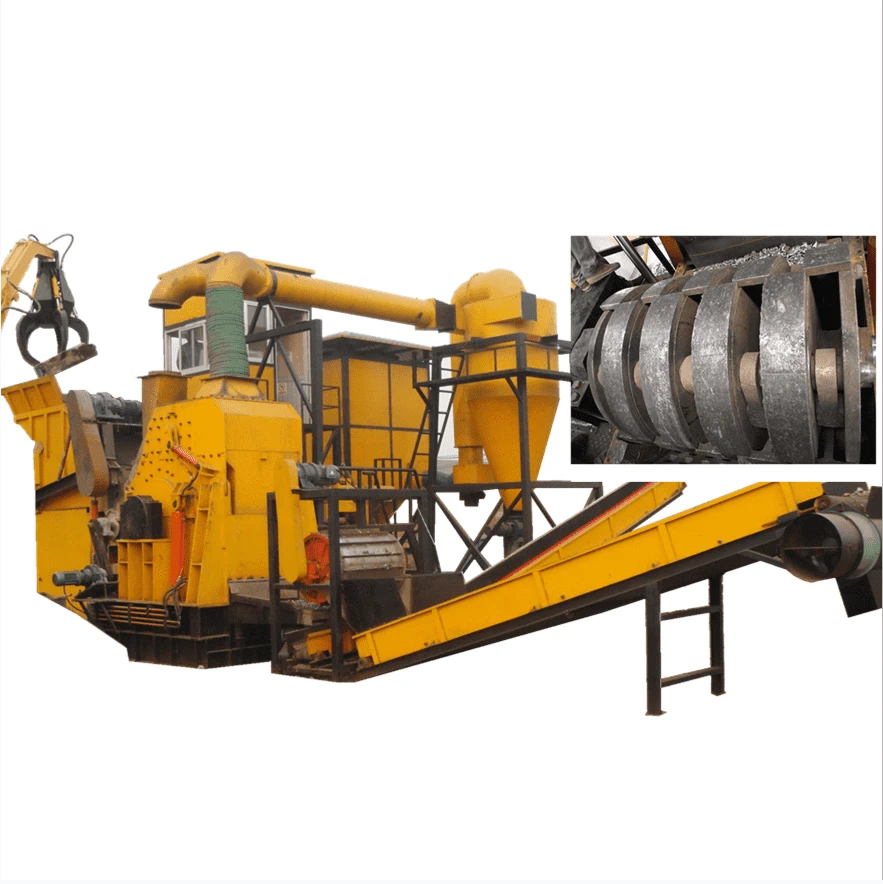

नोभ . 12, 2024 13:54 Back to list
How to Build an Eddy Current Separator
Eddy current separators are essential devices used in various industries for separating non-ferrous metals from other materials. They operate on the principle of electromagnetic induction, generating eddy currents that create magnetic fields allowing the separation of metallic objects from waste streams. This guide outlines the steps to build an efficient eddy current separator.
Step 1 Understanding the Components
Before you start building, it is critical to understand the components involved in an eddy current separator
1. Feeding System This component conveys the mixture of materials to the separator. 2. Conveyor Belt A durable belt that carries the materials over the separator. 3. Eddy Current Rotor The core component, usually made of a powerful permanent magnet, that generates the eddy currents. 4. Electromagnetic Coil This generates the high-frequency magnetic field necessary for the separation process. 5. Collection Bins Different bins to collect the separated materials.
Step 2 Designing the Layout
A well-planned layout is essential for efficient operation. Determine the dimensions of the separator based on the volume of material to be processed. Consider factors such as
- The size of the materials you'll be processing. - The required separation efficiency. - The space available for installation.
Sketch a design that includes the feeding system, conveyor belt, eddy current rotor, and collection bins, ensuring that the materials have enough space to flow and separate properly.
Step 3 Gathering Materials
Collect all the necessary materials and tools. Typical materials include
- Conveyor Belt Choose a robust belt made from rubber or another durable material. - Eddy Current Rotor This can be purchased or constructed using strong magnets and a metal rotor frame. - Electromagnetic Coil A high-frequency coil is required to generate the magnetic field. - Frame Constructed using steel or aluminum for stability. - Support System Necessary for holding the conveyor and rotor in place.
Don’t forget the tools needed for assembly, such as a welding machine, screwdrivers, wrenches, and safety gear
.
Step 4 Assembling the Separator
1. Build the Frame Start by constructing a sturdy frame to support the conveyor and the rotor. Ensure it is stable to withstand vibrations during operation.
2. Install the Conveyor Belt Attach the conveyor belt to the frame, ensuring it is aligned properly for smooth movement. Adjust the tension so that the belt can move freely without slipping.
3. Position the Eddy Current Rotor Install the rotor above the conveyor belt at an appropriate height that allows for optimal separation. Make sure it is securely fastened and correctly aligned.
4. Connect the Electromagnetic Coil Position the coil so that it works in conjunction with the rotor to generate high-frequency fields. Electrical connections should be made securely, following safety standards.
5. Set Up Collection Bins Position the bins at the end of the conveyor belt to collect the separated materials. Ensure they are accessible for easy emptying.
Step 5 Testing and Adjustments
Once assembled, it's time to test the separator. Start with a small batch of materials
1. Monitor Operation Observe how the system handles the input materials. Look for any blockages or irregularities in flow.
2. Check Separation Efficiency Evaluate the effectiveness of the separation by checking the purity of the non-ferrous metal collected. Adjust the speed of the conveyor and the distance of the rotor from the belt as needed.
3. Make Necessary Adjustments Depending on the initial results, you may need to tweak various components. This includes adjusting the magnetic field strength, the angle of the rotor, and the speed of the conveyor belt.
Conclusion
Building an eddy current separator involves careful planning, knowledge of components, and attention to detail during assembly. With the right materials and setup, you can create an efficient system capable of improving recycling processes and enhancing recovery rates of non-ferrous metals. As industries continue to embrace sustainable practices, the demand for such technology will only increase, making the construction of eddy current separators a worthwhile endeavor.
Latest news
Troubleshooting Common Eddy Separator Problems
NewsJul.04,2025
The Role of Metal Recycling Plants in Circular Economy
NewsJul.04,2025
The Impact of Recycling Line Pickers on Waste Management Costs
NewsJul.04,2025
Safety Features Every Metal Shredder Should Have
NewsJul.04,2025
How Industrial Shredders Improve Waste Management Systems
NewsJul.04,2025
How Cable Granulators Contribute to Sustainable Recycling
NewsJul.04,2025